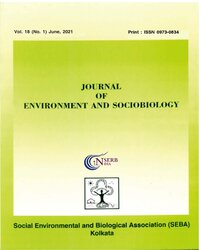Genetic Improvement Of Banana Plants And Their Future Prospect
Subscribe/Renew Journal
Banana (Musa spp.), a highly nutritious fruit, developes without seed due to sterility and parthenocarpic nature of plant. The main aim of genetic improvements in banana range from improved fruit quality, improved yield, disease resistance, tolerance to different biotic and abiotic stresses, to the biosynthesis of pharmaceutical compounds. Other beneficial characteristics include early flowering and maturity, short stature, photosynthetic efficiency, minimum period between successive harvests, strong roots, cylindrical bunches of fruits and fruits of uniform size. It is very difficult to combine all these traits in a single hybrid through sexual hybridization. In vitro culture based technologies that involve embryo rescue, generation of somaclonal variation, and gene-transfer procedures are the alternative to sexual hybridization. The process of transformation involving Agrobacterium and biolistics mediated gene transfer is highly desirable. Future researches on banana will need more attention towards higher nutritive value, genomics, genetic mapping, low cost micropropagation, and somatic embryogenesis. Development of improved varieties with ideal gene architecture, and more resistance to pathogens and pests would be the goal of future researches on banana.
Keywords
Parthenocarpic, Somaclonal variation, Hybrids, Micropropagation, Agrobacterium.
Subscription
Login to verify subscription
User
Font Size
Information



